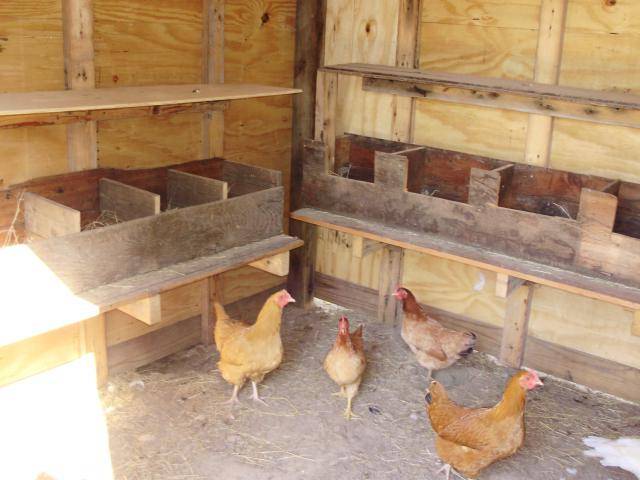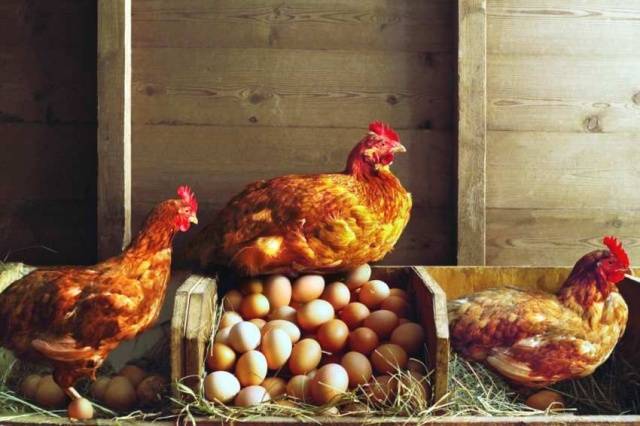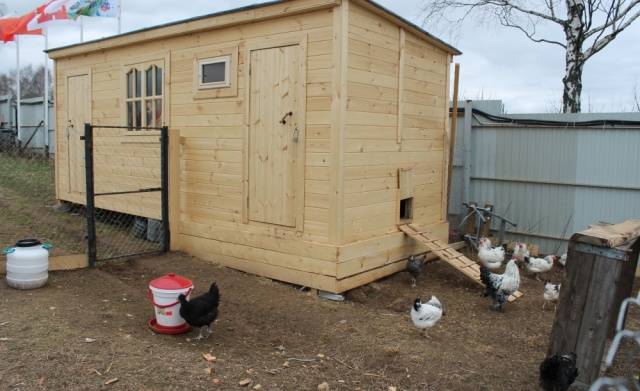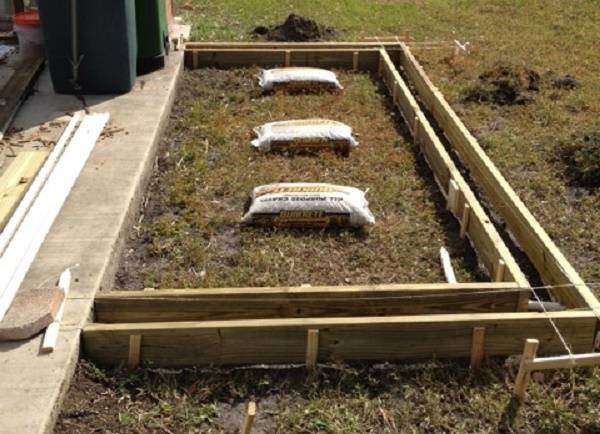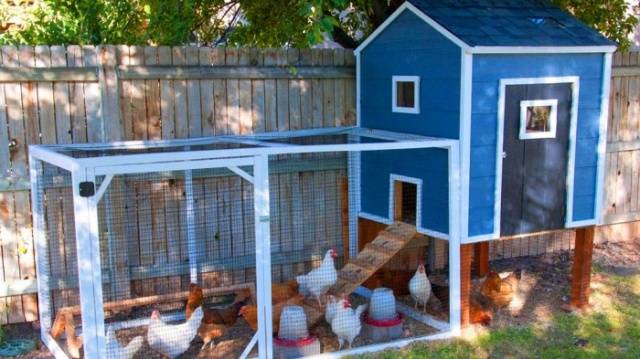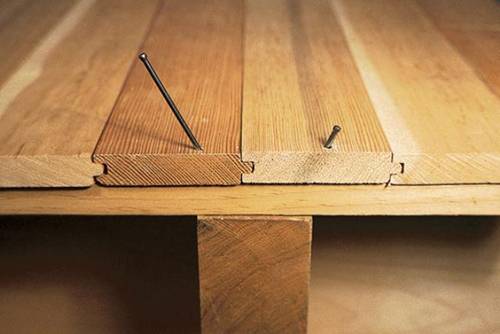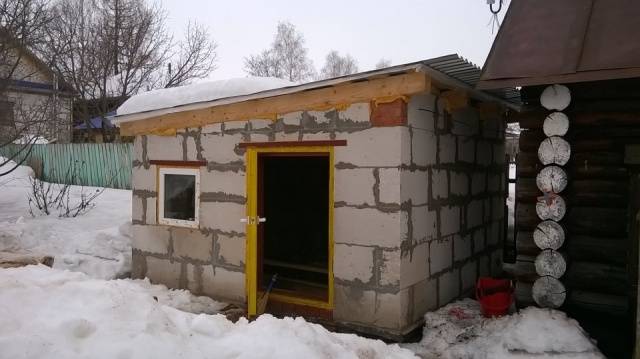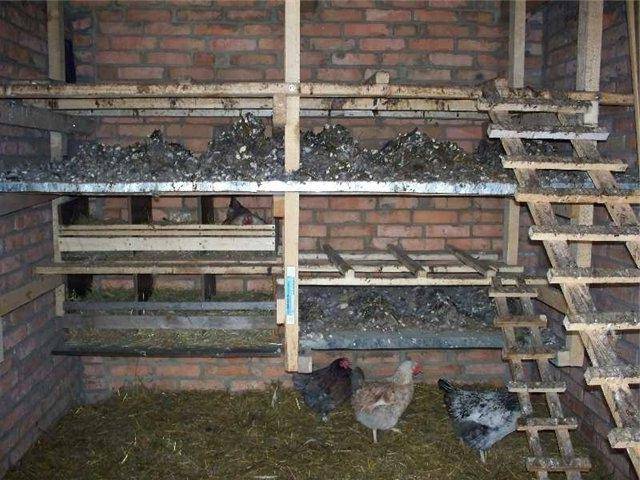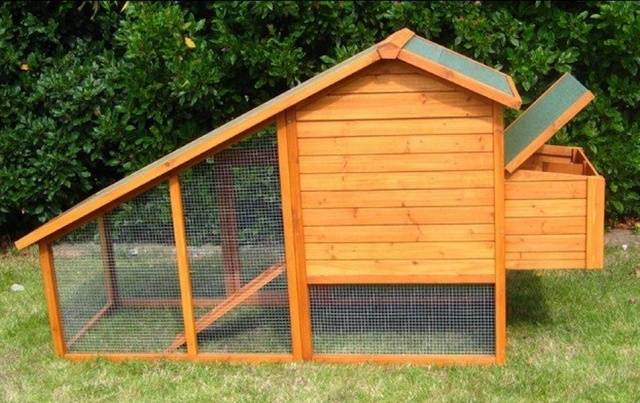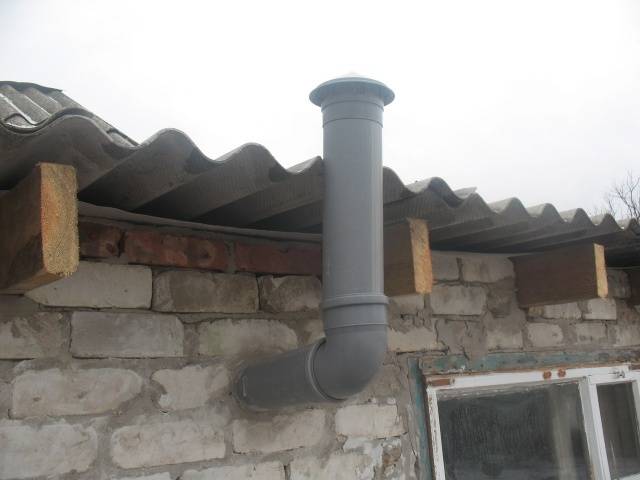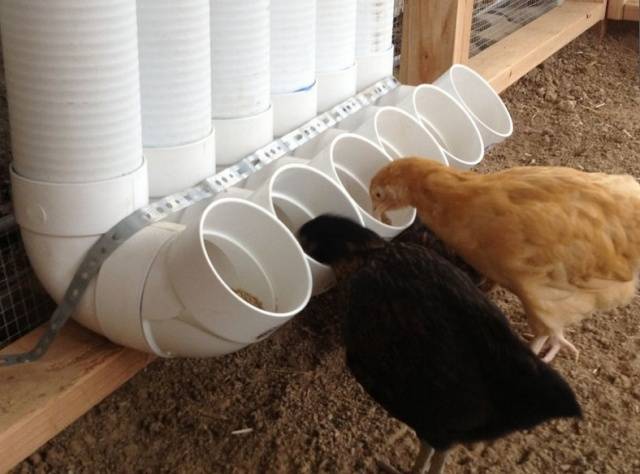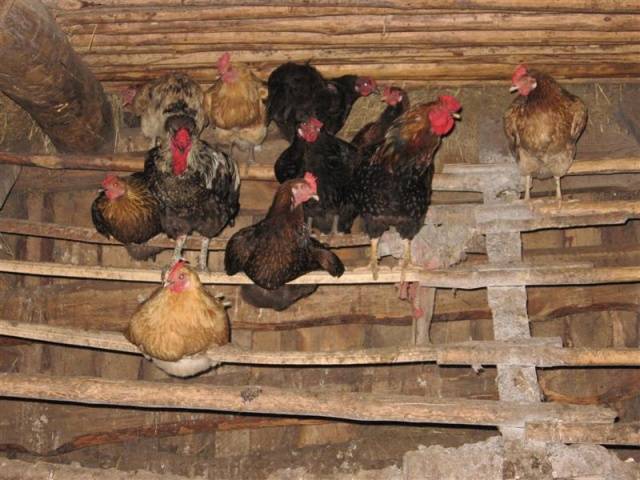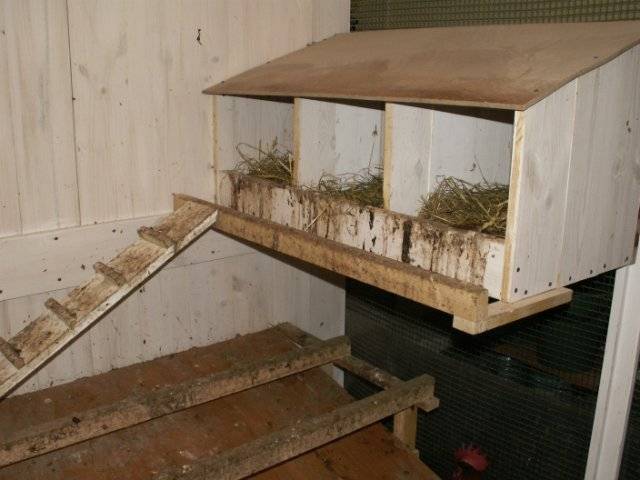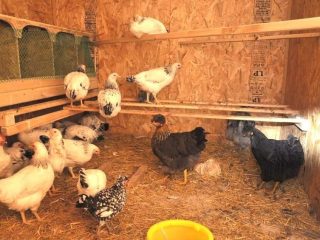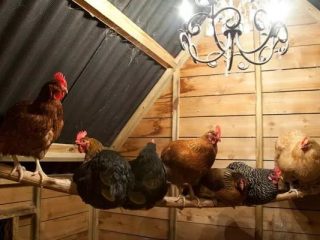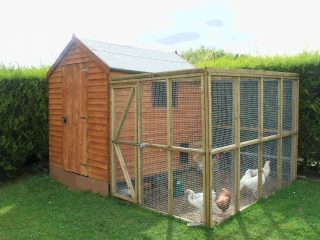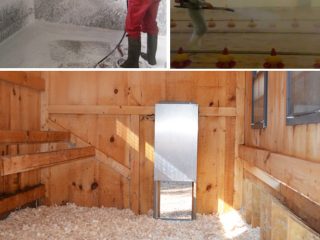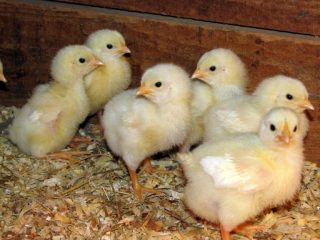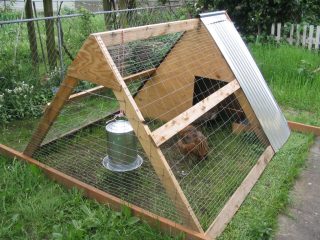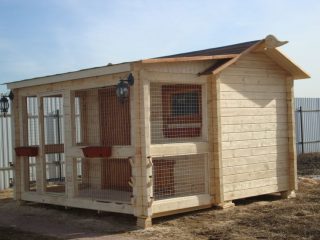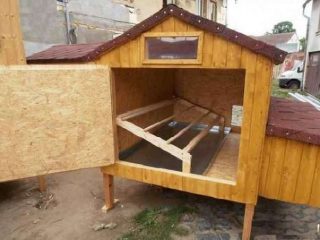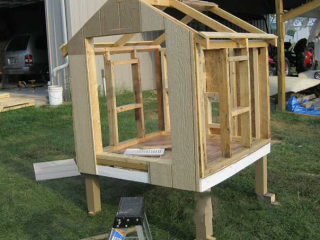Content
Many owners of private houses think about the features of running a household plot. In addition to growing vegetables and fruits, some are also starting to raise poultry. To set up a chicken coop for chickens that will be suitable for living in both winter and summer, you need to know some nuances that will help you build a correct and high-quality chicken coop for 15 chickens. This is the amount of poultry that will fully provide a family of 4-5 people with fresh homemade eggs.
Features of a winter chicken coop for 15 chickens
The size of the chicken coop, which is supposed to house 15 chickens, does not require too much space. You can make such a structure with your own hands. To do this, the main thing is to make the correct drawings and think through all the features of the building in advance.
The main function of a chicken coop is to protect the birds from bad weather and external influences, as well as to ensure the safety of eggs from predators or pets.If you plan to use it all year round, then you should think about arranging a bird house that can provide comfortable conditions in cold weather. This means that you will have to insulate the walls or think through the heating system. An important parameter for a chicken coop is proper lighting, which means that the installation of windows and lighting equipment cannot be avoided.
The size of the room is selected taking into account the number of birds that can comfortably fit on the territory - the number of chickens per square meter should not exceed three heads.
Don’t forget about the prudently equipped walking area near the chicken coop. If in summer it can be an open fenced space, then in winter it is inside the chicken coop should be enough for the chickens.
A finished version of a chicken coop for 15 chickens is shown in the video:
Choosing a site for construction
Before building a chicken coop, you should very carefully select the location for future construction. You should choose a flat area with good sunlight.
The optimal location for placement is a surface with a slight slope, which will help prevent the accumulation of water in the soil, allowing it to drain.
It is important that chickens walk outside on the south side, and the size of the area is calculated taking into account the fact that an area of 1 square meter is required for one laying hen.
It is also important to carefully choose a place so that it is not in a draft, which chickens do not tolerate well. Egg production can also be affected by too much noise, so the chicken coop should be set up in the back of the yard.
An important stage of construction is the arrangement of the foundation
A winter chicken coop requires the construction of a strong and reliable foundation. There are two ways to build a foundation for a chicken coop:
- Slab-type concrete foundation;
- Columnar type foundation.
Slab
Markings are made using stakes and cord. A layer of soil is removed from the surface to a depth of about 35 cm. A layer of crushed stone and sand about 10-15 cm thick is poured in, which is compacted. The perimeter formwork is made from boards. A reinforcing mesh is laid on top of the sand and gravel cushion. The top of the structure is filled with concrete (grade M200). After drying for two weeks, you can begin installing the walls of the chicken coop.
Columnar
This design is made somewhat simpler. Along the perimeter of the future building, holes are drilled with a depth of 0.8 m to 1 m, the diameter of which is 15 cm. Formwork is installed in these holes, the function of which is performed by roofing material twisted into a pipe. Before pouring concrete, metal rods with a diameter of up to 14 mm are inserted into the formwork, 3-4 pieces for each column.
This means that the number of pillars will be 6-9 pieces.
One of the reinforcing bars must have a thread for subsequent fastening to the wooden beam on which the floor will be mounted.
Arrangement of the floor of the chicken coop
A chicken coop that is supposed to be used in winter should be equipped with a floor that will provide the birds with comfort, even at low temperatures. If the foundation is of a columnar type, then the floor should be made of two layers - log boards are attached to the support frame attached around the perimeter and the outer part is sheathed with wooden boards. Insulation is laid on the joists, and the top is sheathed with tongue-and-groove boards treated with an antiseptic.
To arrange a floor with a slab foundation, it is enough to lay wooden logs, put insulation on them, and cover the top with a board.
If you decide not to insulate the floor, then you should generously lay straw on the covering, the layer thickness of which should be about 20 cm. This will provide the necessary level of heat in the winter.
Building walls
In order for the built chicken coop to be strong, durable and stable, you should choose the right material for arranging the walls of the structure. They should be windproof and also help retain heat in winter. Among the common materials that are used to build a chicken house are the following:
- Foam blocks;
- Brick;
- Wood.
Foam block walls are the best option in terms of ease of installation and heat retention by the material. But its cost is not the lowest. Such material will have to be lined with insulation inside.
A brick poultry house is also durable and strong and will last for decades with proper installation and high-quality materials, but its construction can be difficult, and an important point will be the choice of insulation or finishing material inside the chicken coop.
A wooden chicken coop is the most popular type of material for building a poultry house. Its thermal conductivity and durability provide a comfortable microclimate for chickens in the winter, and its environmental friendliness and ventilation promote the circulation of fresh air indoors. This is an economical and practical material, with proper pre-processing of which you can make an excellent chicken coop. However, it is worth considering that you will still have to use insulation.
Roof
Any chicken coop, whether it is a seasonal building or a full-fledged house for chickens, must have a high-quality roof, and its size must correspond to the dimensions of the building. Features of the roof that is installed on chicken coops include:
- It is preferable to choose a gable structure, which in winter will ensure rapid and safe melting of snow;
- It is best to use roofing felt, slate or tiles as a covering material;
- A mandatory requirement is high-quality insulation - using chipboard or mineral wool.
However, a gable roof is both a small attic and a better thermal insulation system.
An important stage of construction is high-quality insulation of both walls and ceilings. This is what ensures the durability of the structure and also contributes to the comfortable state of the chickens.
In addition to insulation, high-quality ventilation should be provided, which will promote the circulation of air masses. Typically, ventilation units are used only in the warm season, so that in cold weather the chickens are not exposed to the wind. In winter, ventilation is done simply by opening the front door for a while.
The hood is mounted at the greatest possible distance from the perches and is made using a pipe with a diameter of 20 cm. The total length of the pipe should be about two meters, it descends inward by 50-70 cm, and the rest remains on the roof surface. A pipe of this size will provide high-quality and efficient ventilation in the chicken coop about 10 square meters.
Internal space
Along with the construction parameters, the internal arrangement of the room is also important, as well as the presence in it of appropriate areas for the different needs of chickens.
In order for chickens to be able to freely eat and drink water, feeders and drinkers should be located at the required level. They are usually placed opposite the perches, against the wall opposite them. The number and size of the feeder and drinker depend on the number of chickens. For comfortable eating and drinking, each chicken should have approximately 15 cm of feeder and drinker.
In order for the birds to rest comfortably, which directly affects the number of eggs they hatch, high-quality perches should be equipped inside. To install them, you will need a wooden block with a cross-section of 40*40 cm or slightly thicker. The top edges are slightly rounded. For installation, an impassable place in the room is selected and the perches are fixed.The distance between the bars should not exceed 25-30 cm.
The length of the bars should be calculated based on the number of birds - 30 cm in length for each chicken. Trays should be placed directly under the perch into which the birds will relieve themselves.
In order for hens to lay eggs comfortably, they should be equipped with high-quality nests. For 15 chickens you will need approximately 4-5 nests. Their design can be either open or closed. When building a winter chicken coop, it is better to choose closed nests. For them, you can use ready-made wooden boxes, the height of which is 40 cm. The width and depth should be about 30 cm. Straw is placed at the bottom of the nest.
A chicken coop for 15 chickens, which is planned to be used in winter, must be durable and warm, as well as spacious, so that the chickens feel comfortable in it. This will encourage the birds to lay eggs, providing the owner with the eggs in the required volume.
